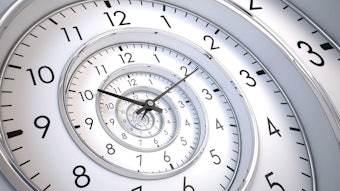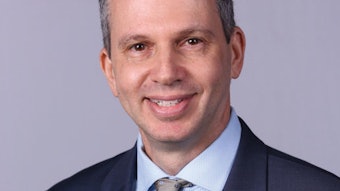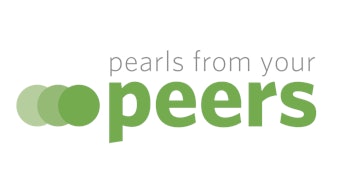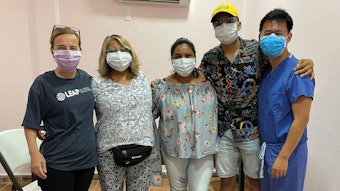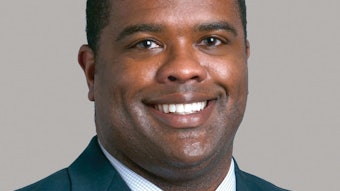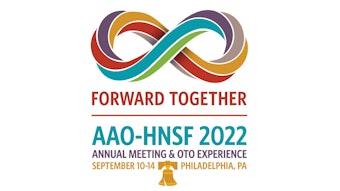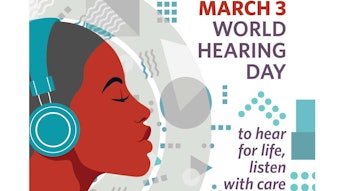CPG: Tympanostomy Tubes in Children (Update) Key Action Statements (KASs)
The CPG update affirms and includes all the original KASs based on external review and assessment. New recommendations based on gaps or new evidence was also prioritized.
KAS 1: OME OF SHORT DURATION: (recommendation against)
Clinicians should not perform tympanostomy tube insertion in children with a single episode of OME of less than 3 months’ duration, from the date of onset (if known) or from the date of diagnosis (if onset is unknown).
KAS 2: HEARING EVALUATION (recommendation)
Clinicians should obtain a hearing evaluation if OME persists for 3 months or longer OR prior to surgery when a child becomes a candidate for tympanostomy tube insertion.
KAS 3: CHRONIC BILATERAL OME WITH HEARING DIFFICULTY (recommendation)
Clinicians should offer bilateral tympanostomy tube insertion to children with bilateral OME for 3 months or longer AND documented hearing difficulties.
KAS 4: CHRONIC OME WITH SYMPTOMS (option)
Clinicians may perform tympanostomy tube insertion in children with unilateral or bilateral OME for 3 months or longer (chronic OME) AND symptoms that are likely attributable, all or in part, to OME that include, but are not limited to, balance (vestibular) problems, poor school performance, behavioral problems, ear discomfort, or reduced quality of life.
KAS 5: SURVEILLANCE OF CHRONIC OME (recommendation)
Clinicians should reevaluate, at 3- to 6-month intervals, children with chronic OME who do not receive tympanostomy tubes, until the effusion is no longer present, significant hearing loss is detected, or structural abnormalities of the tympanic membrane or middle ear are suspected.
KAS 6: RECURRENT AOM WITHOUT MEE (recommendation against)
Clinicians should not perform tympanostomy tube insertion in children with recurrent AOM who do not have MEE in either ear at the time of assessment for tube candidacy.
KAS 7: RECURRENT AOM WITH MEE (recommendation)
Clinicians should offer bilateral tympanostomy tube insertion in children with recurrent AOM who have unilateral or bilateral MEE at the time of assessment for tube candidacy.
KAS 8: AT-RISK CHILDREN (recommendation)
Clinicians should determine if a child with recurrent AOM or with OME of any duration is at increased risk for speech, language, or learning problems from otitis media because of baseline sensory, physical, cognitive, or behavioral factors.
KAS 9: TYMPANOSTOMY TUBES AND AT-RISK CHILDREN (recommendation)
Clinicians may perform tympanostomy tube insertion in at-risk children with unilateral or bilateral OME that is likely to persist as reflected by a type B (flat) tympanogram or a documented effusion for 3 months or longer.
KAS 10: LONG-TERM TUBES (recommendation against)
The clinician should not place long-term tubes as initial surgery for children who meet criteria for tube insertion unless there is a specific reason based on an anticipated need for prolonged middle ear ventilation beyond that of a short-term tube.
KAS 11: ADJUVANT ADENOIDECTOMY (option)
Clinicians may perform adenoidectomy as an adjunct to tympanostomy tube insertion for children with symptoms directly related to the adenoids (adenoid infection or nasal obstruction) OR in children aged 4 years or older to potentially reduce future incidence of recurrent otitis media or the need for repeat tube insertion.
KAS 12: PERIOPERATIVE EDUCATION (recommendation)
In the perioperative period, clinicians should educate caregivers of children with tympanostomy tubes regarding the expected duration of tube function, recommended follow up schedule, and detection of complications.
KAS13: PERIOPERATIVE EAR DROPS (recommendation against)
Clinicians should not routinely prescribe postoperative antibiotic ear drops after tympanostomy tube placement.
KAS 14: ACUTE TYMPANOSTOMY TUBE OTORRHEA (strong recommendation)
Clinicians should prescribe topical antibiotic ear drops only, without oral antibiotics, for children with uncomplicated acute tympanostomy tube otorrhea.
KAS 15: WATER PRECAUTIONS (recommendation against)
Clinicians should not encourage routine, prophylactic water precautions (use of earplugs or headbands, avoidance of swimming or water sports) for children with tympanostomy tubes.
KAS 16: FOLLOW-UP (strong recommendation)
The surgeon or designee should examine the ears of a child within 3 months of tympanostomy tube insertion AND should educate families regarding the need for routine, periodic follow-up to examine the ears until the tubes extrude.
In developing this update, the methods listed in the AAO-HNSF “Clinical Practice Guideline Development Manual, Third Edition” were followed explicitly. https://journals.sagepub.com/doi/full/10.1177/0194599812467004
The full guideline and other resources are available at www.entnet.org/CPGtymp-tubes-update and in Otolaryngology–Head and Neck Surgery as published at otojournal.org.
To read the full article on Tympanostomy Tubes in Children, Click Here.


